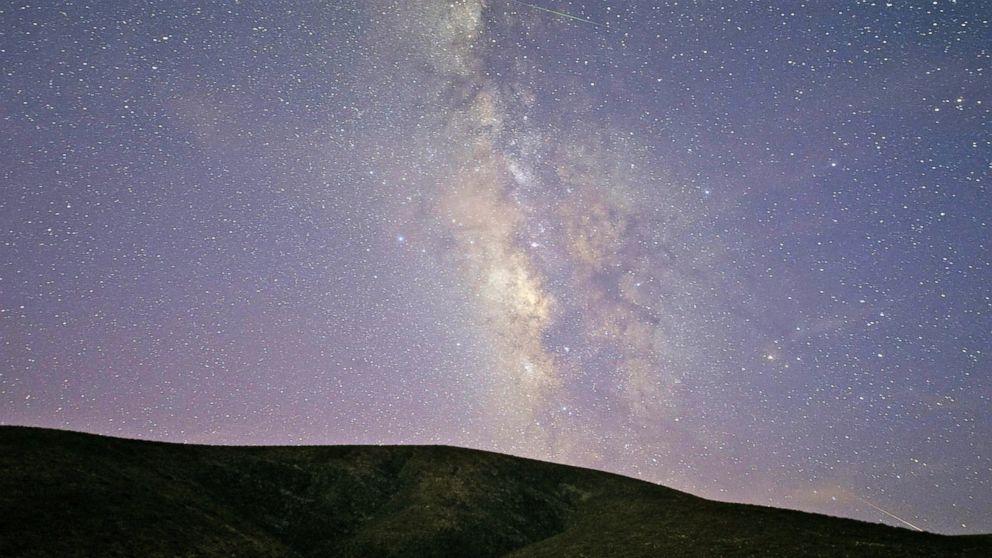Halley's Comet Debris Will Fly Through Sky in Annual Eta Aquarid Meteor Shower
Everything you need to know about the annual Eta Aquarid meteor shower.

— -- Debris from Halley's Comet will streak across the sky overnight for the annual Eta Aquarid meteor shower.
Pieces of the icy comet break off and burn up in the Earth's atmosphere, making them visible to people on the ground below, according to NASA.
This year's shower will peak on Wednesday at 9 a.m. EDT with as many as 30 meteors whizzing through the sky at its busiest, according to Bill Cooke, the lead at NASA's Meteoroid Environmental Office.
A large waning gibbous moon may obscure part of the shower meaning it isn't expected to be as spectacular as previous years. However, with plenty of meteors still streaking through the sky, it could be worth setting your alarm for.
The meteor shower is named because the pieces appear to travel from the direction of the constellation Aquarius.
Halley Comet, where the meteors come from, is visible to Earthlings every 76 years. The next viewing is set for the middle of 2061.